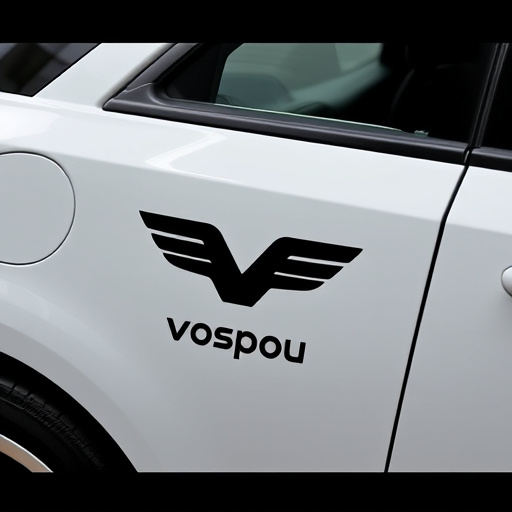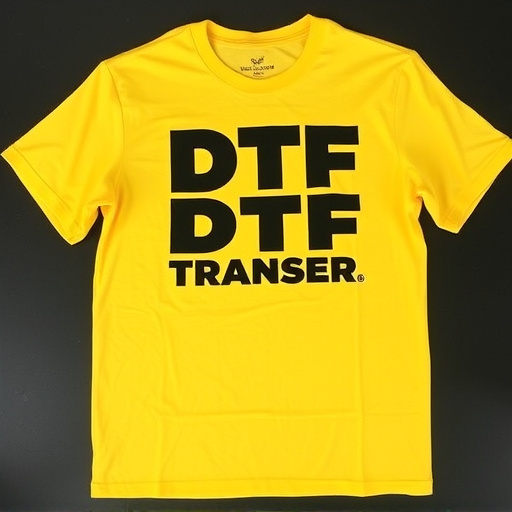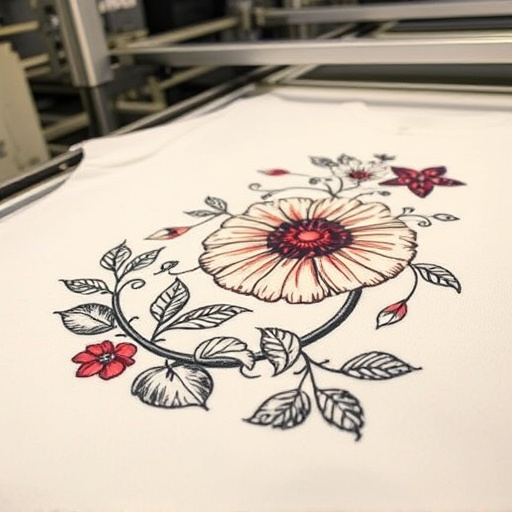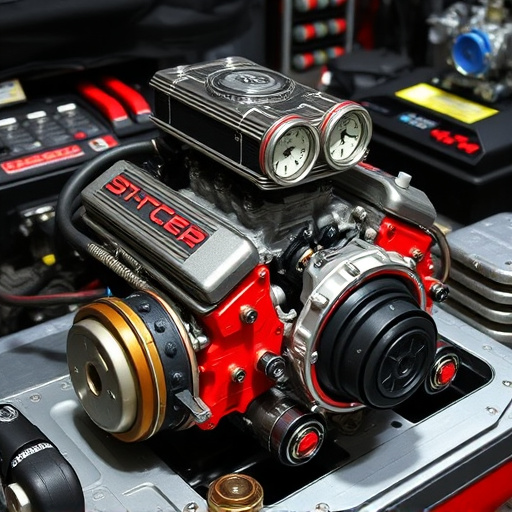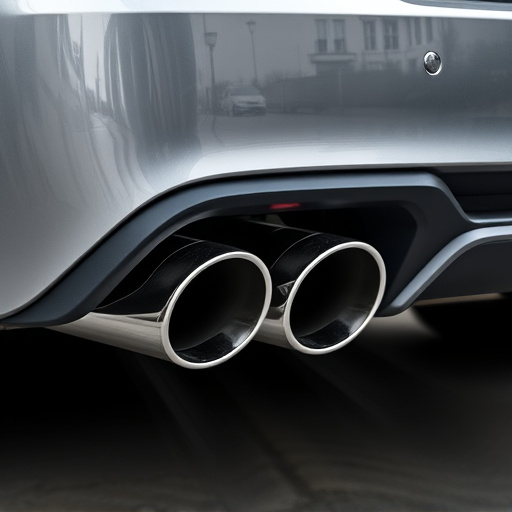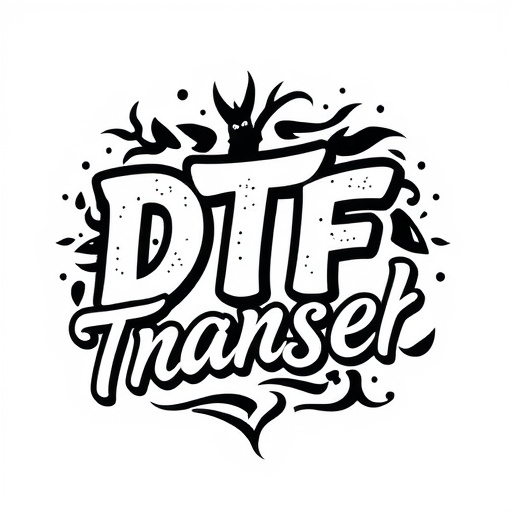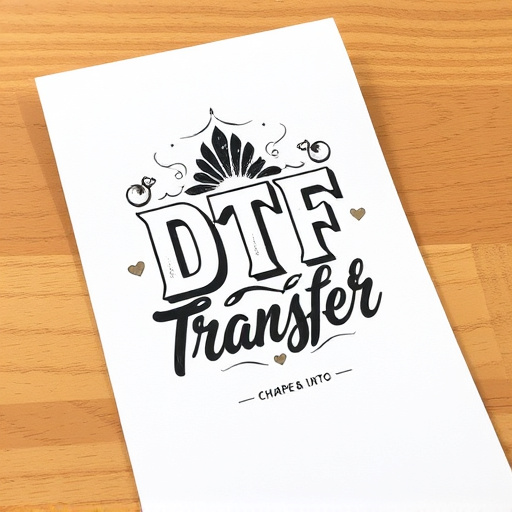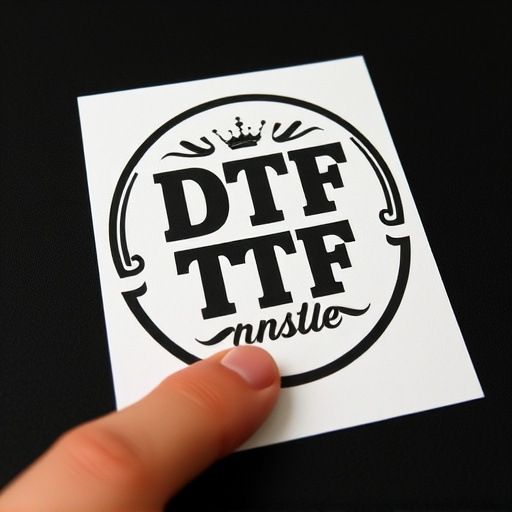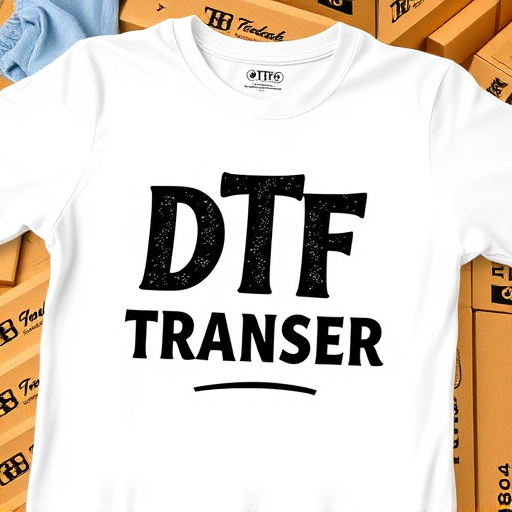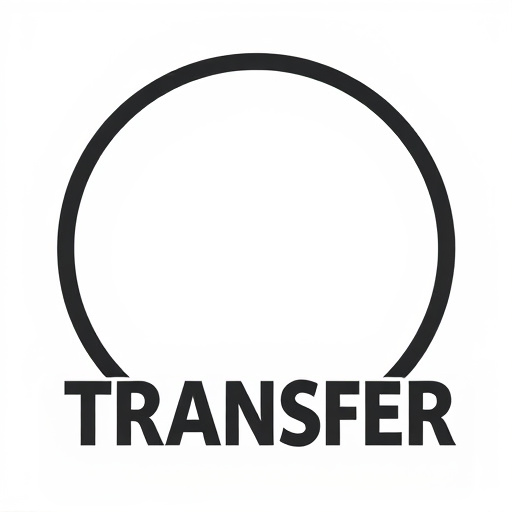Direct-to-Film (DTF) transfer is a cutting-edge printing technology that offers precise color reproduction and vibrant prints on textiles, vinyl, and various materials. Compared to traditional Heat Transfer Vinyl (HTV), DTF streamlines production, reduces errors, and cuts turnaround times significantly. It's ideal for custom apparel, accessories, signage, and home decor, enabling high-resolution prints and efficient small-batch production. While DTF has superior image detail and color accuracy, HTV remains popular due to its versatility in mass production. Future trends include enhanced ink formulations, new materials, AI automation, and growing demand for personalized printing.
Direct-to-film (DTF) transfer technology has emerged as a game-changer in the printing industry, offering a direct and efficient method for applying designs to various surfaces. This article delves into the comparison between DTF transfer and conventional heat transfer vinyl applications. We’ll explore the intricacies of DTF, its advantages, diverse applications, and how it stacks up against traditional methods. By understanding these distinctions, businesses can make informed decisions, leveraging DTF printing’s potential for enhanced productivity and quality in their operations.
- Understanding Direct-to-Film (DTF) Transfer: A Comprehensive Overview
- Heat Transfer Vinyl: Traditional Methods and Limitations
- Advantages of DTF Transfer over Conventional Heat Transfer Vinyl
- Applications of DTF Printing: Unlocking Endless Possibilities
- Quality Analysis: Comparing DTF Prints to Heat Transfer Vinyl
- Future Trends: The Evolving Landscape of DTF Technology
Understanding Direct-to-Film (DTF) Transfer: A Comprehensive Overview

Direct-to-Film (DTF) transfer is a cutting-edge application that has revolutionized the way we create and apply printed designs, especially in the fields of textile printing and vinyl decoration. This technology involves transferring ink directly onto a substrate using heat and pressure, eliminating the need for intermediate rollers or plates. DTF Printing offers several advantages, such as precise color reproduction, vibrant prints, and the ability to print on various materials, including fabrics, plastics, and metals.
The process starts with digital design preparation, where graphics are optimized for DTF transfer. Then, a specialized machine applies heat and pressure to fuse the ink particles onto the target surface. This method ensures fast production times and allows for complex designs and intricate details in DTF Prints. Its versatility makes DTF Transfer a preferred choice for custom apparel printing, signmaking, and even home decor projects, offering both professional results and cost-effectiveness.
Heat Transfer Vinyl: Traditional Methods and Limitations

Heat Transfer Vinyl (HTV) has been a go-to method for applying graphics and designs to various surfaces for many years. Traditional HTV transfer involves several steps, including printing on paper, cutting out the design, and then transferring it onto the desired material using heat and pressure. While this process offers high detail and precision, it can be time-consuming and requires specialized equipment and skills. The limitations of DTF transfers lie in the complexity of the design and the type of fabric or material being printed. Delicate or smooth surfaces can present challenges, as the adhesive may not grip well, leading to potential issues with long-term durability and washability of the DTF prints.
Additionally, the quality of the final product is heavily dependent on the expertise of the operator and the printing equipment used. Ink bleeding, smudging, or improper heat application can result in damaged or distorted DTF prints. Despite these drawbacks, Heat Transfer Vinyl remains a popular choice for custom apparel, accessories, and promotional items due to its versatility and ability to produce vibrant, high-resolution DTF transfers.
Advantages of DTF Transfer over Conventional Heat Transfer Vinyl
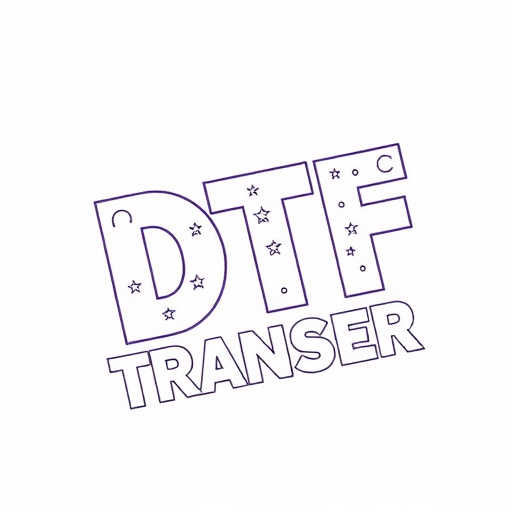
Direct-to-film (DTF) transfer offers several advantages over conventional heat transfer vinyl applications. Firstly, DTF printing allows for more vibrant and intricate designs with higher resolution, making it ideal for creating detailed prints on a variety of materials. This technique eliminates the need for complex setup and registration processes often required in traditional heat transfer methods, streamlining the production process and reducing potential errors.
Additionally, DTF Transfer provides a faster turnaround time as it directly applies the ink to the final substrate, eliminating the need for backing sheets and additional curing steps. As a result, businesses can deliver products with DTF prints more swiftly, meeting the demands of fast-paced markets. Moreover, this method supports a broader range of materials, including fabric, paper, and even certain plastics, expanding the applications and versatility for designers and manufacturers alike.
Applications of DTF Printing: Unlocking Endless Possibilities
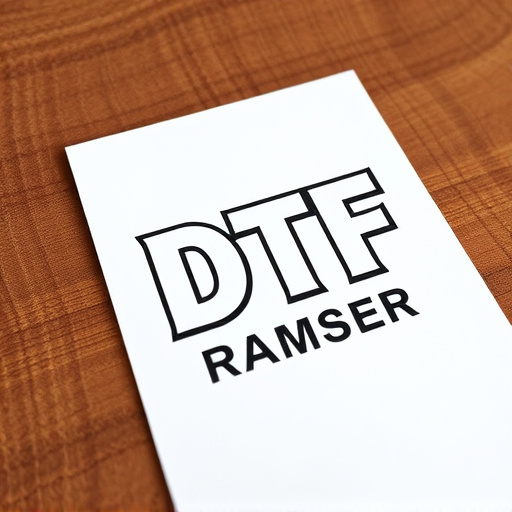
Direct-to-film (DTF) printing has opened up a world of possibilities for various applications, revolutionizing the way we create and customize products. From clothing and accessories to signage and decorations, DTF transfer technology offers an efficient and versatile solution. With this method, intricate designs can be swiftly transferred onto different materials, making it ideal for small-batch production, prototyping, and even personalizing items on-demand.
DTF Printing allows for exceptional detail and precision, ensuring that complex artwork and graphics are accurately replicated. This technology has gained traction in the fashion industry, where designers can quickly bring their creative visions to life by printing custom patterns and textures directly onto fabrics. Moreover, it caters to the needs of businesses seeking promotional items, enabling them to create unique, branded merchandise with ease. DTF Transfers also find use in home décor, empowering individuals to transform ordinary objects into personalized statement pieces.
Quality Analysis: Comparing DTF Prints to Heat Transfer Vinyl
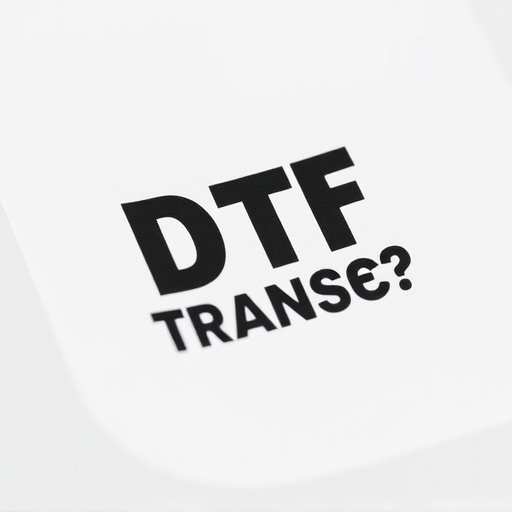
When comparing Direct-to-Film (DTF) transfers with heat transfer vinyl applications, quality analysis reveals distinct differences. DTF printing offers superior image resolution and color accuracy, making it ideal for intricate designs and detailed graphics. The process directly applies ink to the final medium, eliminating the need for intermediate layers, resulting in a vibrant, high-definition finish. Each print is a unique masterpiece, perfect for one-of-a-kind creations.
In contrast, heat transfer vinyl relies on transferring ink from a carrier sheet to the desired surface through heat and pressure. While this method is cost-effective and suitable for mass production, it may not achieve the same level of detail and color intensity as DTF. The printed design is essentially a stencil, which can lead to potential fading or smudging if not applied correctly. However, heat transfer vinyl remains a popular choice for its versatility, especially in creating customizable apparel and accessories.
Future Trends: The Evolving Landscape of DTF Technology
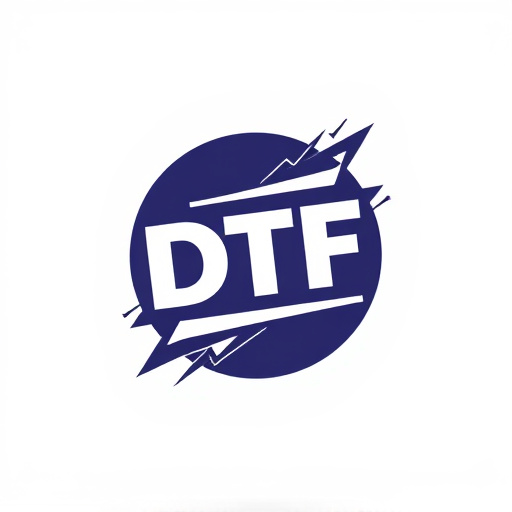
The future of direct-to-film (DTF) technology looks promising as innovation continues to drive its evolution. Emerging trends point towards enhanced DTF printing capabilities, with improvements in ink formulations and print head technologies. These advancements promise more vibrant DTF prints and increased speed and efficiency. The industry is also exploring new materials, expanding the range of applications for DTF transfers from traditional apparel to diverse surfaces like textiles, plastics, and even metal.
AI and automation are expected to play a significant role in shaping the DTF landscape. These technologies can optimize print patterns, enhance design precision, and streamline production processes. As demand for personalized and on-demand printing increases, DTF technology is poised to become a versatile and efficient solution for creating custom DTF transfers, catering to various sectors from fashion and sportswear to signage and promotional products.

